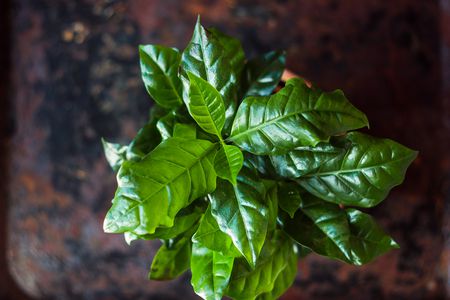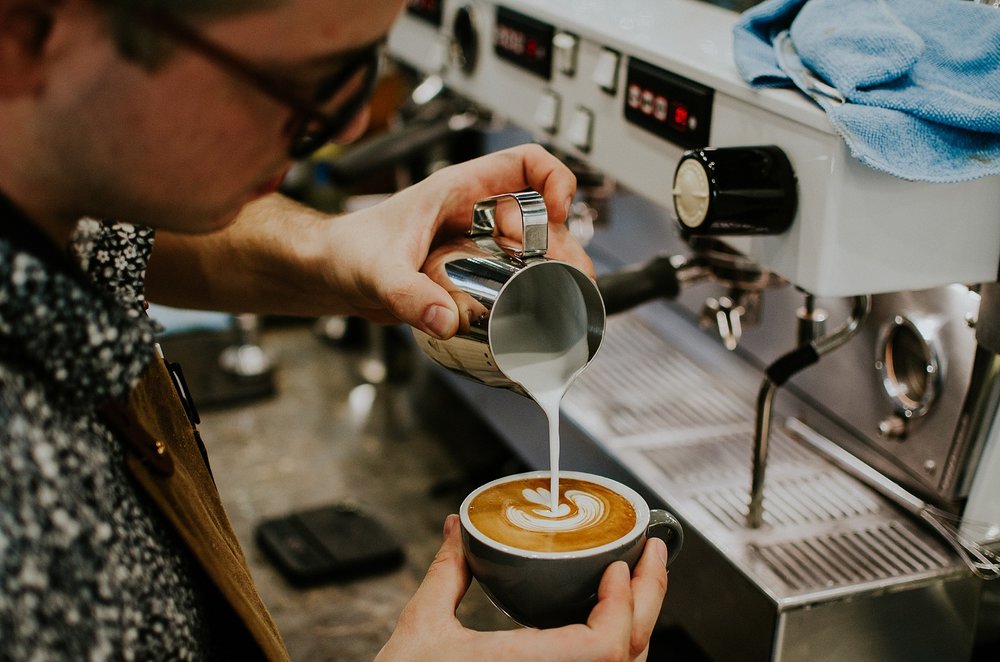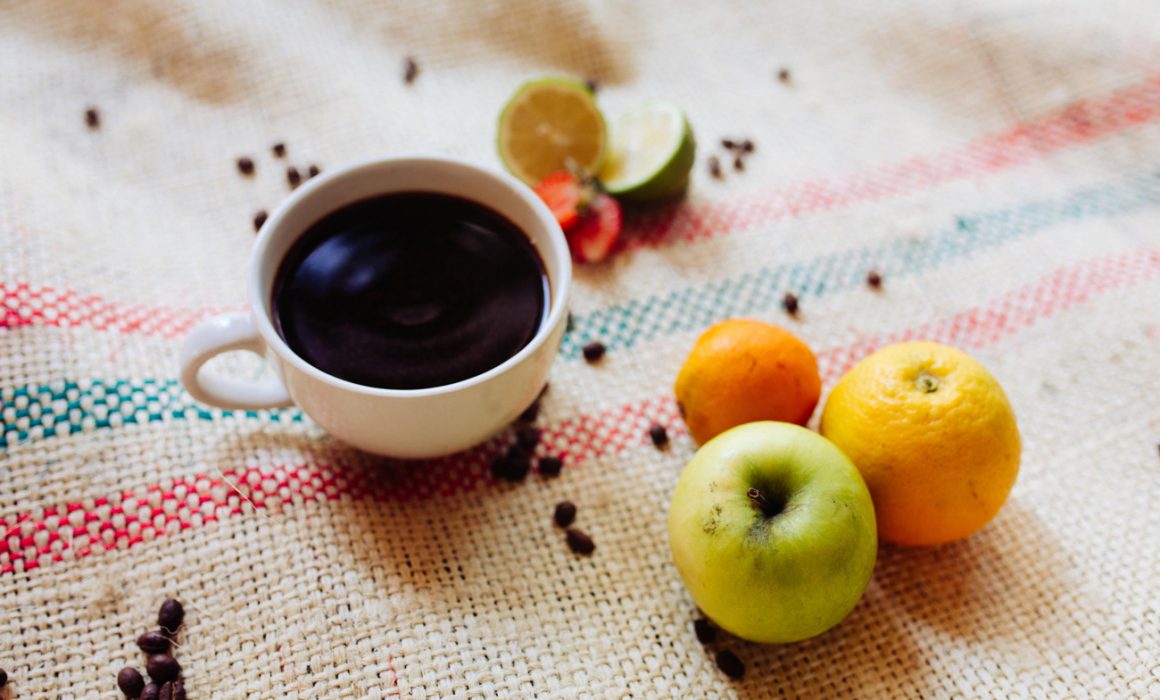Areas and conditions suitable for growing coffee | how to grow Arabica coffee?
Professional coffee knowledge exchange More coffee bean information Please pay attention to coffee workshop (Weixin Official Accounts cafe_style)
Coffee growing areas and conditions
Since coffee is grown in tropical and subtropical climates between the Tropic of Capricorn and the Tropic of Capricorn, one might take it for granted that coffee is grown in hot tropical regions, but in fact coffee is usually grown in cooler climates. the average temperature and rainfall on hillsides and plateaus were more suitable for coffee cultivation. For example, East Timor, one of the planting areas, is located in Dili, the capital of northeast Timor Island, with an altitude of 0 meters and a temperature above 30℃. It is an area with high temperature and humidity. However, located in the southwest of Dili, the elevation of Lete County is 1600 meters, the average temperature drops to about 10℃, and the climate is relatively comfortable.

Sunshine
If the coffee tree receives a large amount of sunshine, it will increase the leaf temperature and reduce the photosynthesis efficiency of the tree. Therefore, in order not to let the coffee tree shine directly into the sun, it is usually planted on the gentle hillside on the east side of the mountain. If it cannot be planted in these areas, the coffee tree will be planted next to a tree higher than the coffee tree (also known as the shade tree Shadow Tree) to protect it from excessive sunlight. However, Costa Rica or parts of Brazil do not need to grow Shadow Tree because it is usually cloudy in the afternoon.
Air temperature
The growth of coffee trees will be affected by the temperature. Generally speaking, the best growing environment for coffee is the plateau where the average temperature is about 22 ℃. The native place of the Arabica species, the Ethiopian plateau, is just in the backlight, and the average temperature is about 20 Murray 24 ℃. If the temperature of the planting environment is higher than the optimum planting temperature, it will cause the fruit to mature earlier and be more likely to be infected with induced diseases. However, if the average temperature of the planting environment is lower than the optimum planting temperature, the growth of the coffee tree will be slow, resulting in a smaller and smaller yield.
In the tropics, there will be rainy and dry seasons in a year. Coffee trees in most producing areas are stimulated by rainfall (Blossom shower) at the end of the dry season, causing the coffee to blossom at the same time and bear fruit seven months later. Coffee is usually harvested only once a year, but the tropical regions of Kenya and places such as Colombia, which is narrower in the north and south, have two rainy seasons and dry seasons in a year, so the local coffee has two harvests a year.
Rainfall
The areas where coffee is grown must have rainfall between 1200--1600mm in a year. When coffee beans are in their growing period, insufficient rainfall will affect the harvest. The climate has deteriorated in recent years, and coffee production is often affected in many coffee producing areas due to climate changes such as drought and abnormal rainfall.
Altitude
In Central America, Colombia and East Africa, the place that meets the temperature of coffee cultivation is usually the plateau between 1000 and 2000 meters above sea level. However, the temperature decreases as the latitude rises, so coffee trees can also be planted in lowlands with lower temperatures. Coffee in Central America is based on altitude. The higher the altitude of the origin, the better the quality of the coffee.
Soil.
The origin of coffee is closely related to volcanoes, and the soil near volcanoes usually contains substances such as weathered lava or ash. This kind of soil is very deep and rich in humus, and the drainage condition is very good.
Soils with large amounts of humus also contain nitrogen, phosphorus and other substances that can retain water and nutrients, and contain substances that can prevent soil erosion or wind erosion. As for the best soil quality, the neutral soil is between pH 4.5-6.0. because the acidic soil is easy to lack potassium, calcium, magnesium and other elements, while the alkaline soil is easy to lack manganese.
The way Arabica plants are planted
Arabica species account for about 70% of the global coffee production, but because Arabica species are more sensitive and fragile, they need to be planted with great care.
1. Sowing seeds
The fruit of coffee is a sphere with a diameter of 1-1.5 cm, with a very small amount of sweet pulp inside, and then two semicircular seeds standing opposite each other.
Sometimes there are fruits containing only a single round seed, but these fruits account for only 5% of the whole tree and are called round beans, which are precious and relatively expensive in the Kona region of Hawaii. Although raw beans without endocarp are also called seeds, only peas with residual endocarp can be used when growing coffee.
two。 Raising seedlings
Most farmers or farms take soil from areas with proper humidity and good drainage to make seedbeds and bury seeds at a depth of 1-2 cm. There are also many farms that use small pots to raise seedlings.
The seeds will germinate 30-50 days after sowing, leaving only the seedlings that grow well. The suitable temperature for germination is 28-30 ℃, but because the coffee is not resistant to strong sun and wind and rain, the seedbed should be placed in a shaded place and the sunshine should be lengthened with the growth of the coffee tree. After 5-6 months, the coffee tree will become a seedling about 50 cm high, and it can be planted on the farm at this time.
3. Fertilizer application
The nutrients necessary for planting plants are called fertilizers, including nitrogen, phosphoric acid and potassium. The nitrogen content in coffee trees will affect the growth of leaves, branches, trunks and roots, and then affect coffee production. Phosphoric acid is not only a necessary nutrient for roots, trunks and buds, but also an important substance for coffee in the young and early fruiting period.
Coffee farmers usually choose to fertilize during the rainy season, but no fertilizer is applied during the harvest period to stimulate coffee trees. In addition, some farmers will also mix the shelled coffee fruit with chicken manure and other things, using it as fertilizer.
If not fertilized, it will accelerate the impoverishment of the soil, resulting in a reduction in coffee production.
4.Shadow Tree
Shadow Tree, which is used to block the direct sunlight of coffee trees, usually chooses legumes and other trees that can coexist with coffee trees.
Shadow Tree can reduce the intensity of sunlight on coffee trees, and can adjust the temperature of the entire farm, so that the annual harvest is more fixed, thus extending the life of coffee trees. In addition, Shadow Tree can also prevent wind and frost and inhibit the growth of weeds.
Shadow Tree is usually grown in coffee-producing areas in Central America, such as Colombia and Tanzania.
5. Weed
If the weeds on the farm are too lush, they will absorb the important nutrients supplied to the coffee. In addition, coffee trees lack water in the dry season, so they use mulch to cover the soil, or interplanting crops to block sunlight and inhibit the growth of weeds.
6. Intercropping
There are usually more small farmers growing coffee than large farms. Small farmers, on the other hand, have a smaller land area than farms and usually grow food crops such as beans, cassava (potatoes native to the tropics), vegetables, pineapples and bananas in addition to coffee. These crops can replace Shadow Tree to avoid direct sunlight on coffee trees, and can also be used as feed for livestock, household fuel, etc.
7. Overlay
In addition, the soil covered with mulch can block the sun better than the soil after weeding, so it can prevent soil water evaporation and the rise of surface temperature. A drop in surface temperature can also increase humus in the soil, so coffee trees can get more nutrients. In addition, humus can also increase the activity of microorganisms and earthworms in the soil, help the soil release carbon dioxide, water, ammonia, phosphorus, calcium and other substances into inorganic state, and increase the yield.
8. irrigation
If there is less rainfall in that year, or if it is located in an area where the dry season is more obvious, irrigation should be used to assist the growth of coffee trees. If the coffee trees do not absorb enough water, the roots will go too deep into the ground, so that the fine roots distributed in the upper soil will not be able to absorb nutrients, resulting in a reduction in coffee harvest, so the farmland where coffee is grown must be equipped with irrigation facilities.
9. Pruning
If the coffee trees are not pruned in time when growing coffee, the yield will begin to decline after the harvest of 7murs-8 years. As long as there is a certain place on the branch of the coffee tree to bear fruit, it will not blossom the next year and will not bear fruit again, so the yield of coffee will decrease year by year, resulting in a decline in production. This problem can be solved by pruning. After the coffee harvest, the trunk is obliquely cut off about 30 centimeters above the ground, so that the tree will grow side branches next to the remaining trunk and gradually become a new trunk. In addition, the excess buds should also be removed, and the branches and leaves that are too dense should be trimmed regularly to concentrate nutrients on the main branches.
10. Flowering
The flowers of coffee trees will have slightly sweet scents such as jasmine and citrus, but this aroma will begin to disappear after 3-4 days of flowering. In the rainy season and dry season for the more obvious producing areas, there will be rain called Blossom Shower before the official rainy season, and the flowers of coffee trees will bloom at this time. However, if the rainfall is not fixed, the flowering time and frequency are also irregular.
The flowers of coffee are small white flowers with five petals about 1 cm wide.
11. Pollination and fertilization
Pollination is the spread of pollen to other flowers through coal such as honey. When pollen spreads to the styles of other flowers on the same tree, it is called self-fertilization; when pollen spreads to the flowers of another tree, it is called cross-fertilization. The coffee trees planted in Arabica are self-fertilized.
twelve。 Coffee cherry
Because the appearance of coffee fruit is similar to that of cherry, it has a nickname for coffee cherry. Ripe coffee cherries taste slightly sweet, but because they have very little flesh, they are not usually eaten.
About seven months after the coffee blossoms, the tree will bear round green fruits, which are fully ripe from yellow, red, purple to bright red.
13.
The climatic conditions of different coffee producing areas are also different, so there are global coffee producing areas available for coffee harvest all year round. The harvest period is from October to February in the northern hemisphere, May to September in the southern hemisphere, and coffee can be harvested all year round in the equatorial region.
The higher the elevation, the slower the coffee matures. If the coffee is planted on a hillside, it can be harvested from the lower elevation area to the higher place. In addition, each coffee tree can be harvested three times.
As for the way coffee is harvested, it is ideal to pick each ripe fruit carefully with bare hands. However, when it comes to the speed of harvest, immature green fruits are often mixed in the process of picking, and higher quality farms will try their best to select the fruits with the best maturity.
If you pull a large amount of fruit directly from the branch by hand, it will be easily mixed with unripe beans, which is a less recommended harvest method. In addition, such as vigorously shaking the higher coffee tree, so that the fruit falls and then collects mature fruit, it will reduce the quality of coffee.
Reference: introduction to Coffee textbook by Junying Horikou
END
Important Notice :
前街咖啡 FrontStreet Coffee has moved to new addredd:
FrontStreet Coffee Address: 315,Donghua East Road,GuangZhou
Tel:020 38364473
- Prev

Does the barista need a certificate? Is it necessary to take a coffee certification course?
Professional coffee knowledge exchange more coffee bean information please follow the coffee workshop (Wechat official account cafe_style) baristas want to research? The domestic coffee industry has cancelled the qualification certificate, but there are still international popular SCA certification and Q Grader certification. Is it necessary to take some certificates? The answer must be different according to everyone's working condition and career plan. The most in class
- Next

Is coffee bad when it's not sour? Coffee acid is not acid has nothing to do with quality, the whole system likes!
Professional coffee knowledge exchange More coffee bean information Please pay attention to coffee workshop (Weixin Official Accounts cafe_style) Please give me a cup of non-sour coffee, thank you! This should be one of the most common situations encountered in boutique coffee shops, and customers who have a longer history of drinking coffee tend to have a lower tolerance for sourness. Although coffee consumption has increased in recent years,
Related
- Beginners will see the "Coffee pull flower" guide!
- What is the difference between ice blog purified milk and ordinary milk coffee?
- Why is the Philippines the largest producer of crops in Liberia?
- For coffee extraction, should the fine powder be retained?
- How does extracted espresso fill pressed powder? How much strength does it take to press the powder?
- How to make jasmine cold extract coffee? Is the jasmine + latte good?
- Will this little toy really make the coffee taste better? How does Lily Drip affect coffee extraction?
- Will the action of slapping the filter cup also affect coffee extraction?
- What's the difference between powder-to-water ratio and powder-to-liquid ratio?
- What is the Ethiopian local species? What does it have to do with Heirloom native species?

